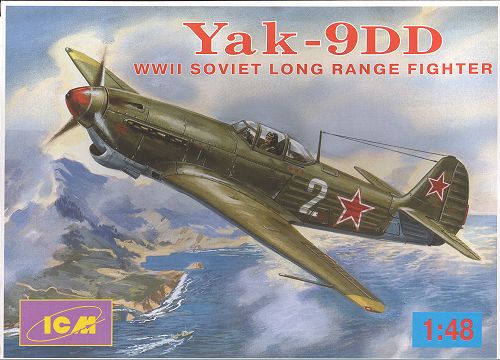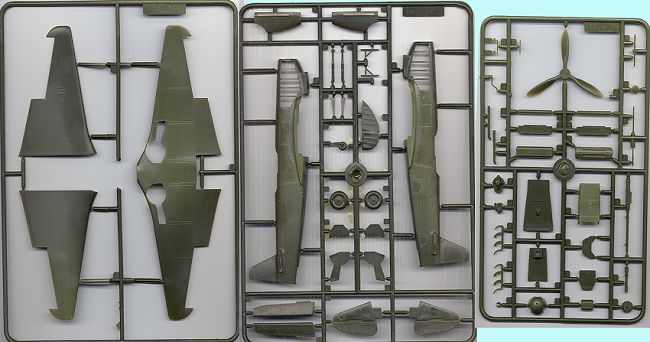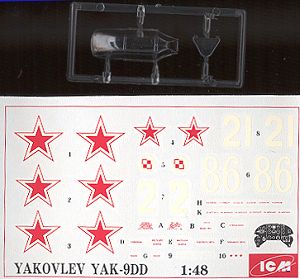
|
KIT: |
ICM 1/48 Yak-9DD |
|
KIT # |
48013 |
|
PRICE: |
|
|
DECALS: |
3 aircraft, all VVS 1944/45 |
|
REVIEW & PHOTOS BY: |
|
|
NOTES: |

|
HISTORY |
Without a doubt, the finest Soviet fighters of the Great Patriotic War were those produced by Yakovlev. His initial Yak-1 and -7 fighters were tough aircraft that came into service in the summer of 1941, right when they were needed in the fight against the Germans. They possessed performance that, in the hands of a skilled pilot, was able to successfully combat the Messerschmitts of the Luftwaffe. Typical of all Russian aircraft, it was not the most refined aircraft in the skies, but was rugged, heavily armed, fast, and easy to maintain under grueling conditions.
A further refinement of the Yak-7 aircraft was the Yak-9. This aircraft was very similar but had a greater amount of metal in its construction. Specifically it used metal wing spars which allowed for higher wing loading and the installation of fuel tanks in the wings to increase range. The Yak-9T had a 37mm cannon in the nose and this required the cockpit to be placed further aft in the fuselage. The -9K had this weapon increased to 45 mm. The -9D used this extra space for an additional fuel tank, making it the longest ranged of the Yak-9 fighters. This extra range was in great demand for bomber escort during Allied 'shuttle bombing' missions.
|
THE KIT |

If you think you have seen these sprues before, you have. They are the same as in the Yak-9T and -9K kit. ICM's kit is molded in an olive drab plastic. Detail of the parts is superb, consisting of fine engraved lines and a very good representation of fabric surfaces on the aft fuselage and control surfaces. The kit has been engineered to place almost all the ejector pin marks in an unobtrusive place so you won't have to worry about removing them. There is almost no flash at all and seam lines are very small as well. There are a few sink marks, notably on the fuselage near the cockpit, the equipment rack, as well as on the horizontal stabilizers. These are in conjunction with very thick plastic areas and should be easy to fill. As with the other ICM kits I have, this one needs all the parts cleaned in warm, soapy water to remove the mold release agent. You should be cleaning all your kits so that the paint will stick properly anyway!
One very nice detail is the inclusion of a complete engine. This is quite welcome for those that like to do dioramas. The cockpit is complete with seat, stick and pedals and there is detailing on the side walls of the fuselage as well. The transparencies are a bit thick and offer just the closed canopy option.

The 8-page instruction booklet is very good. There is a short history in four languages on the front. On the next page is a parts breakdown and every single part is named just under the part diagram. Wish all instructions did this. The next three pages are a 9-step constructions sequence. The next two pages contain a painting diagram, which is also repeated (in color) for one of the aircraft on the back of the box. Final page is a color diagram cross-referencing the colors in Testors and Humbrol numbers.
The decal sheet offers three variations, one in overall grey, one in two greys and a final one in green and matte black. All have light blue undersides. The decals are very matte, similar to Revell of Germany decals, but easily read and in perfect register.
Overall, a very nice kit and if it retails the same as their other kits, a bargain as well.
Thanks to the nice folks at ICM USA for the review sample. You can find ICM kits at any of the better hobby shops.
Visit their site on the web.